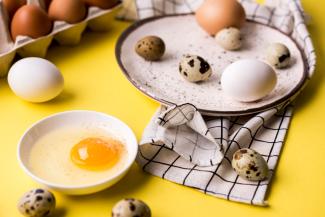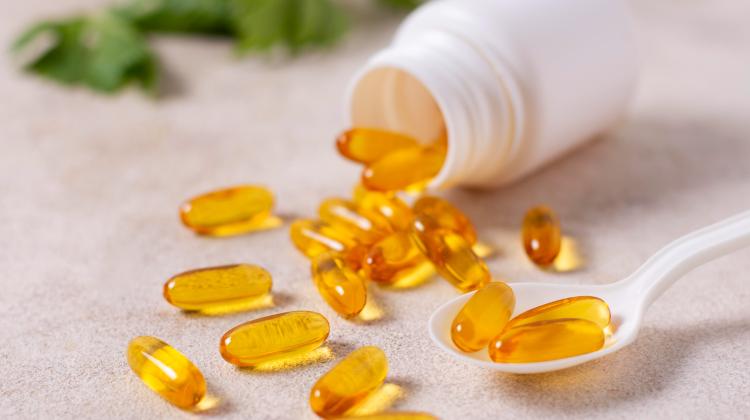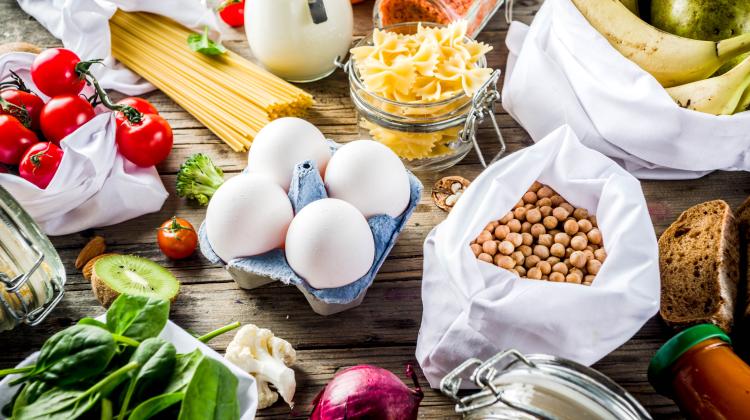How many times have I heard this question: Which came first: the egg or the chicken? And although I have changed my answer over the years, I am still not sure which came first. However, I am certain that the egg is an excellent food product in our diet. Sometimes when I think about what I would pack for a deserted island, it would definitely be eggs, as their composition is almost perfect. They contain practically all the nutrients, maybe except for vitamin C. Of course, not all ingredients are in ideal amounts and proportions, but they still constitute an extraordinary mixture of nutrients and health-promoting components. Moreover, the egg hides many surprising facts, because it might seem that the white contains a lot of protein. But the fact is that the white mainly consists of water. And it is the yolk that contains much more protein, a very important nutrient for humans.
And is the eggshell edible? For some, of course, yes. And although crunching it in your mouth is not a pleasure, in powdered form it can be quite an interesting addition to the diet. The eggshell along with the membrane (parchment membrane flake) also contains valuable ingredients, mainly calcium carbonate (shell), which is a building block for bones, and keratin (membrane), a special protein that plays a structural and protective role. Increasingly, the consumption of powdered shells is advised, of course, after their proper preparation. Studies indicate that they can be effective in treating certain conditions. In natural medicine, the method of shell therapy is not coincidentally known. This shows that the egg is "gold" in food and nothing is wasted. According to the zero waste principle. The eggshell observed under a microscope allows you to see its other side. It turns out that it is quite porous. And if someone showed great patience and counted these holes (pores) in the shell, they would reach a result of 16-17 thousand.
And can you live on eggs alone? And here the answer is simple, of course not. Because as I mentioned, eggs are almost nutritionally complete, but they contain phosvitin and avidin. Phosvitin disrupts the absorption of calcium, magnesium, and iron. And avidin binds to biotin (i.e., vitamin B7), forming a difficult-to-dissolve complex, which during thermal processing (cooking, frying eggs) may decompose. Therefore, it is advised to consume eggs cooked in various forms and fried, then the body better absorbs valuable ingredients from them. However, we should pay attention to the time of thermal processing and approach it with exceptional precision. You can throw an egg into the water and boil it for 15 minutes. It will certainly be hard-boiled, or "too hard-boiled". Too long a cooking time for eggs will adversely affect their composition. We will see this "with the naked eye", as the yolk will be surrounded by a thin blue-green layer. To prevent this, immediately after optimal cooking of the eggs, they should be immersed or poured over with very cold water. Then the outer layers will not "overheat", and the inner ones
will reach the right consistency. To cook a soft-boiled egg, you need to perform many experiments in the kitchen and develop your method or trust the calculations of physicists and cook for 3.5 minutes.
Is a yellow or orange yolk better? Egg yolks can be of various colors, from yellow to intensely orange. Xanthophylls are responsible for their color, and in particular lutein and zeaxanthin. The color of the yolk depends on how the chicken is fed. The more beta-carotene (which is also a xanthophyll) in the feed and diet, the more intense the color of the yolks. Quite often, eggshells can also have various colors - white, brown, but also colorful. Yes, colorful, and I'm not talking about colorful Easter eggs, but about colorful chicken eggs. Sometimes such a chicken laying colorful eggs is called an Easter chicken because it can lay blue and green eggs. These chickens are Araucanas, originating from South America, although they can be found in other parts of the world, including Poland.
Eggs can vary in size. Those chicken ones, the most popular, weigh about 65g. The smallest, hummingbird eggs, are only a few mm long and weigh about 250 mg. On the other hand, the largest are ostrich eggs, which can weigh over 2 kg, and to hard-boil them, it takes 2 hours. You can prepare many dishes from eggs. Gourmets also consume fish eggs, i.e., caviar, and a Mexican delicacy, for example, are ant eggs.





